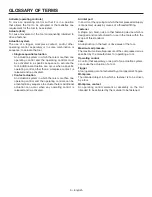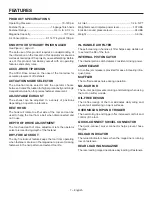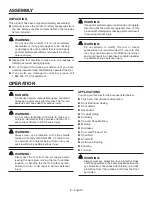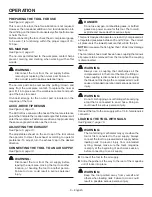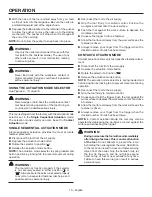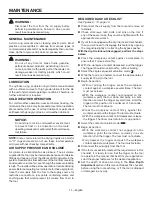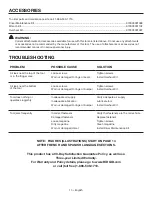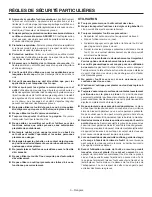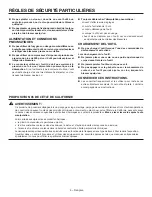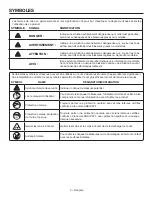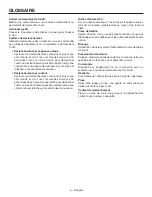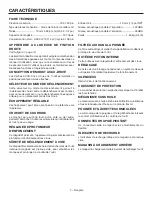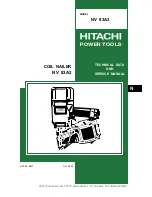
4 – English
SPECIFIC SAFETY RULES
Do not drive fasteners on top of other fasteners or with
the tool at an overly steep angle as this may cause
deflection of fasteners which could cause injury.
Do not drive fasteners close to the edge of the
workpiece as the wood may split, allowing the
fastener to be deflected possibly causing injury.
AIR SUPPLY AND CONNECTIONS
Do not use oxygen, combustible gases or bottled
gases as a power source for this tool as tool will
explode, possibly causing injury or death.
Do not use with an air compressor which can
potentially exceed 200 psi as tool may burst, possibly
causing injury.
The connector on the tool must not hold pressure
when air supply is disconnected.
If an incorrect fitting
is used, the tool can remain charged with air after
disconnecting and thus will be able to drive a fastener
even after the air line is disconnected, possibly causing
injury.
Always disconnect air supply:
• Before making adjustments
• When servicing the tool
• When clearing a jam
• When tool is not in use
• When moving to a different work area, as accidental
actuation may occur, possibly causing injury.
LOADING TOOL
Do not load the tool with fasteners when any one of
the operating controls is activated.
When loading tool:
Never place a hand or any part of body in fastener
discharge area of tool.
Never point tool at anyone.
Do not pull the trigger or depress the workpiece
contact as accidental actuation may occur, possibly
causing injury.
SAVE THESE INSTRUCTIONS
Refer to them frequently and use them to instruct others
who may use this tool. If you loan someone this tool, loan
them these instructions also.
CALIFORNIA PROPOSITION 65
WARNING:
This product and some dust created by power sanding, sawing, grinding, drilling, and other construction activities may
contain chemicals, including lead, known to the State of California to cause cancer, birth defects, or other reproductive
harm.
Wash hands after handling.
Some examples of these chemicals are:
• lead from lead-based paints,
• crystalline silica from bricks and cement and other masonry products and,
• arsenic and chromium from chemically treated lumber.
Your risk from exposure to these chemicals varies, depending on how often you do this type of work. To reduce
your exposure, work in a well-ventilated area and with approved safety equipment, such as dust masks that are
specially designed to filter out microscopic particles.






